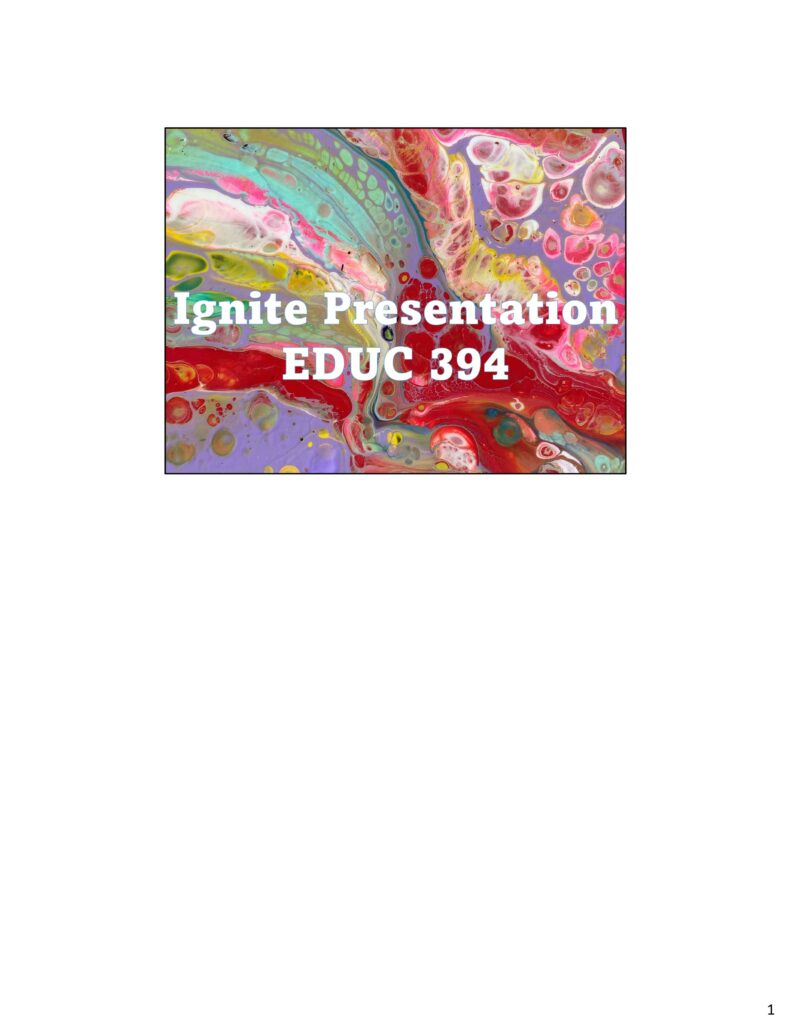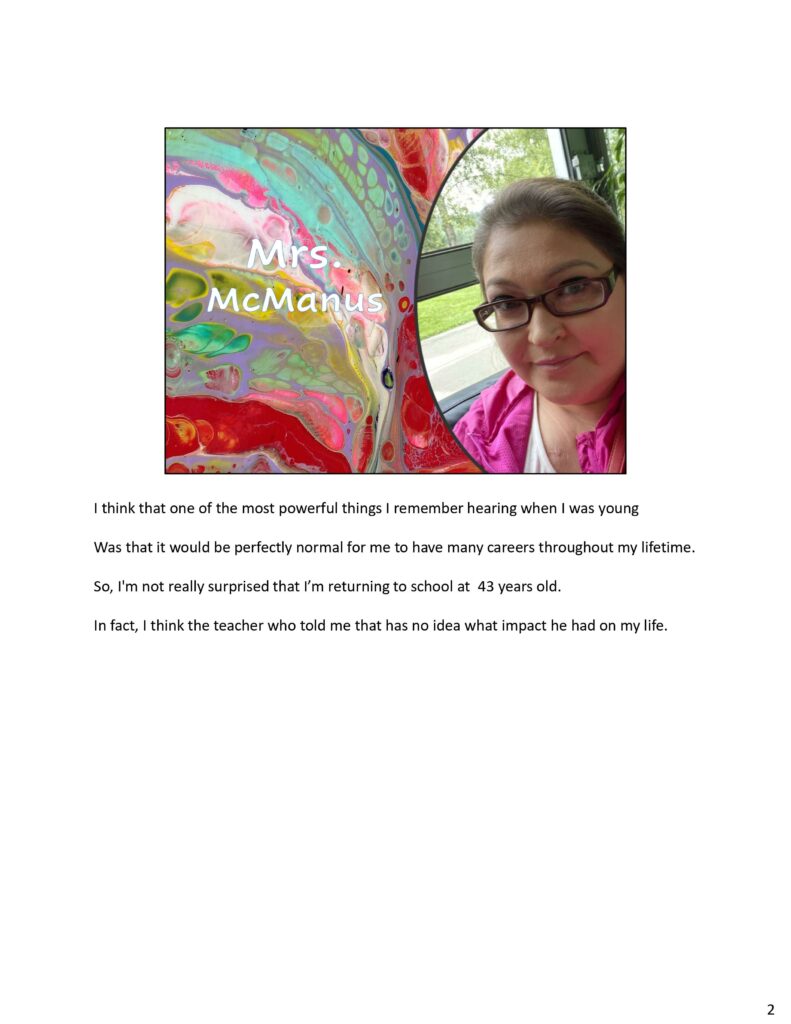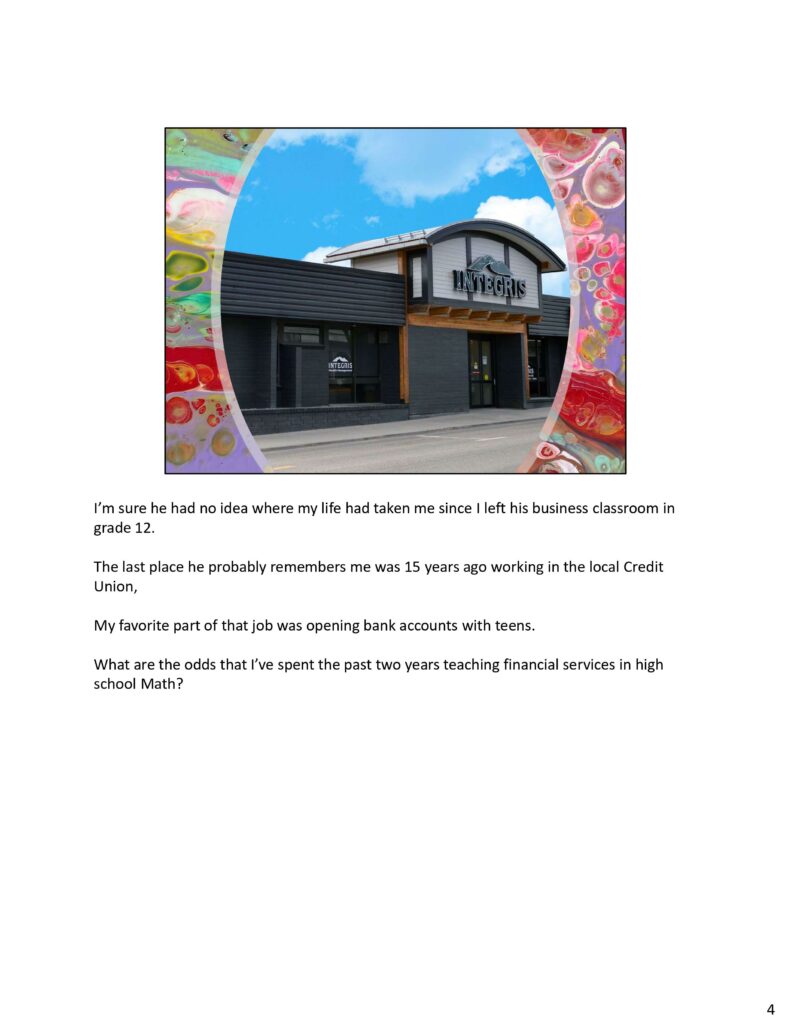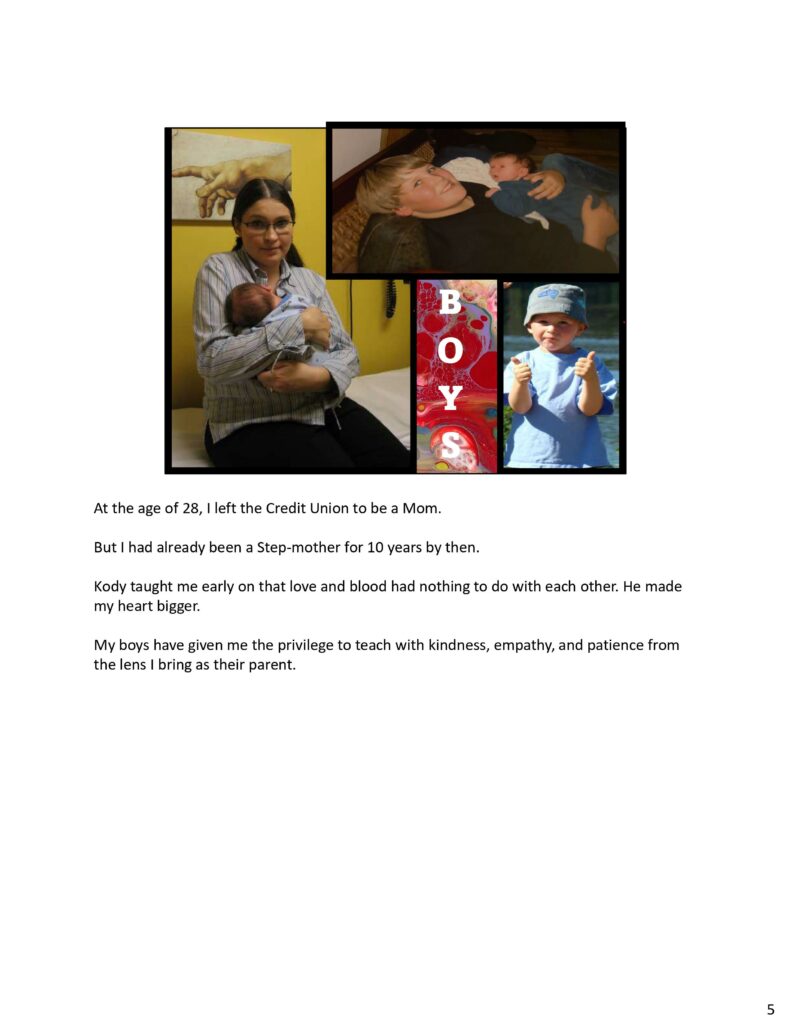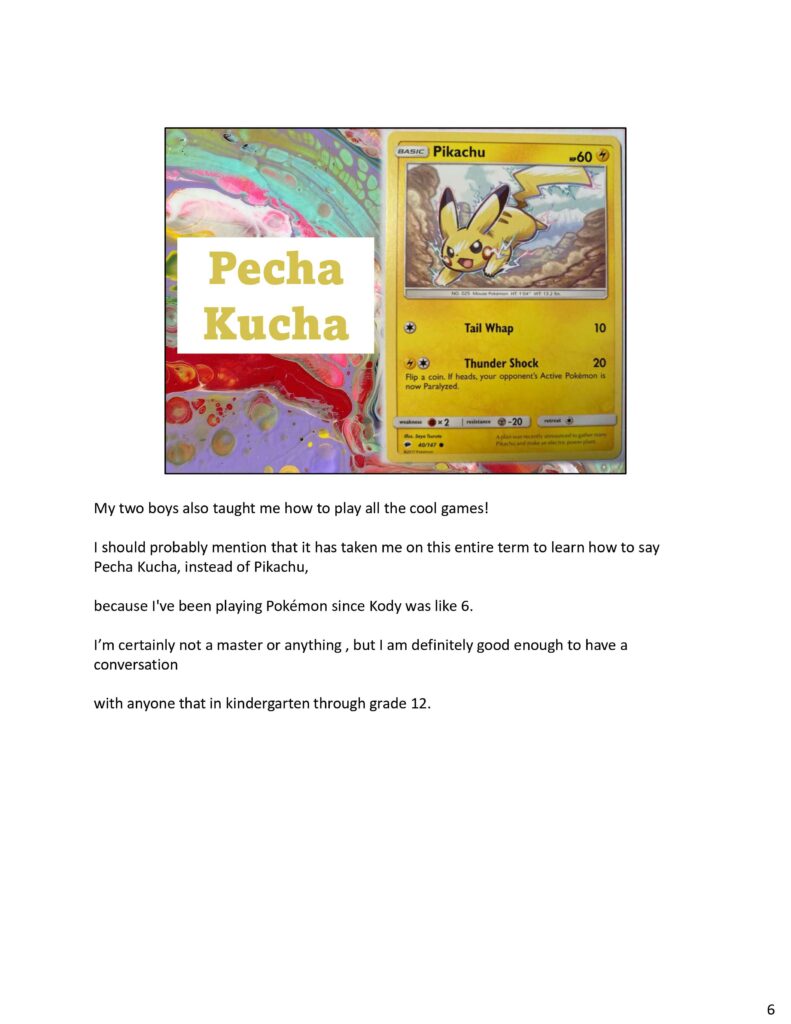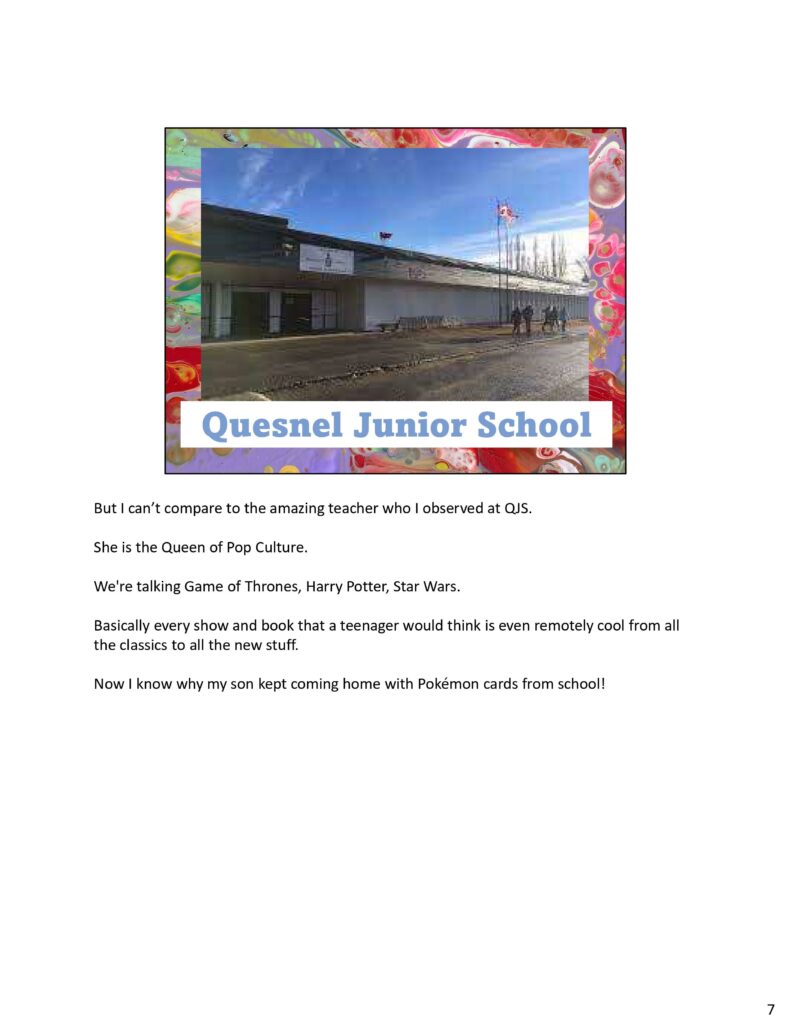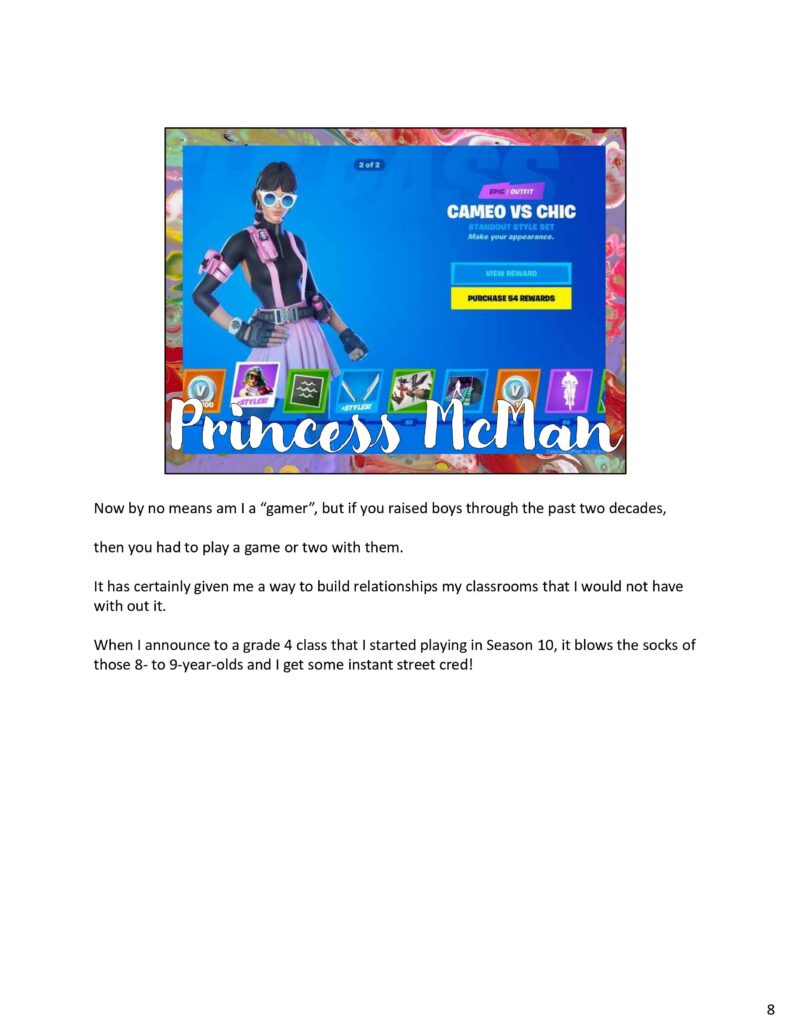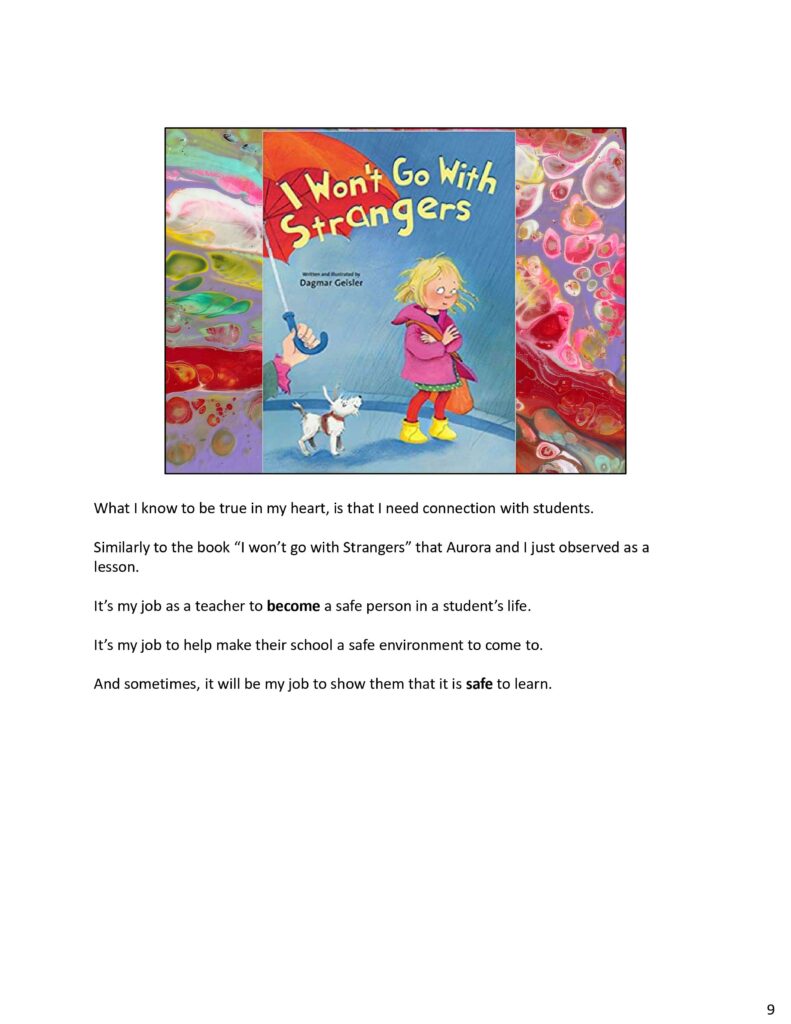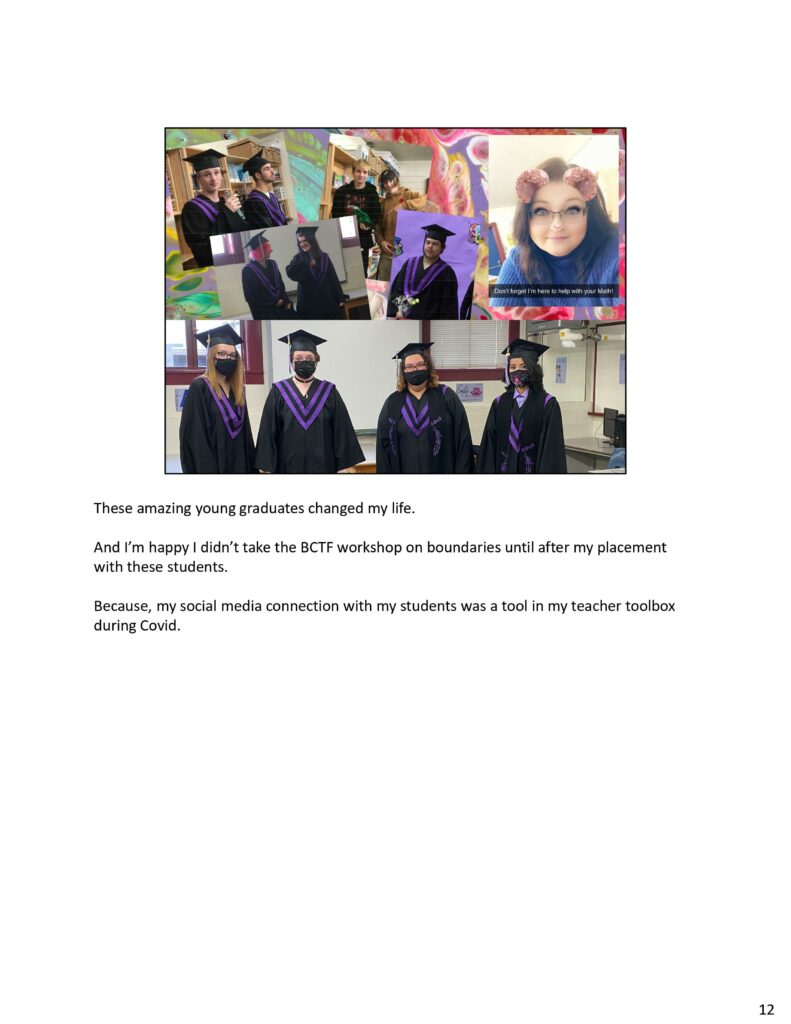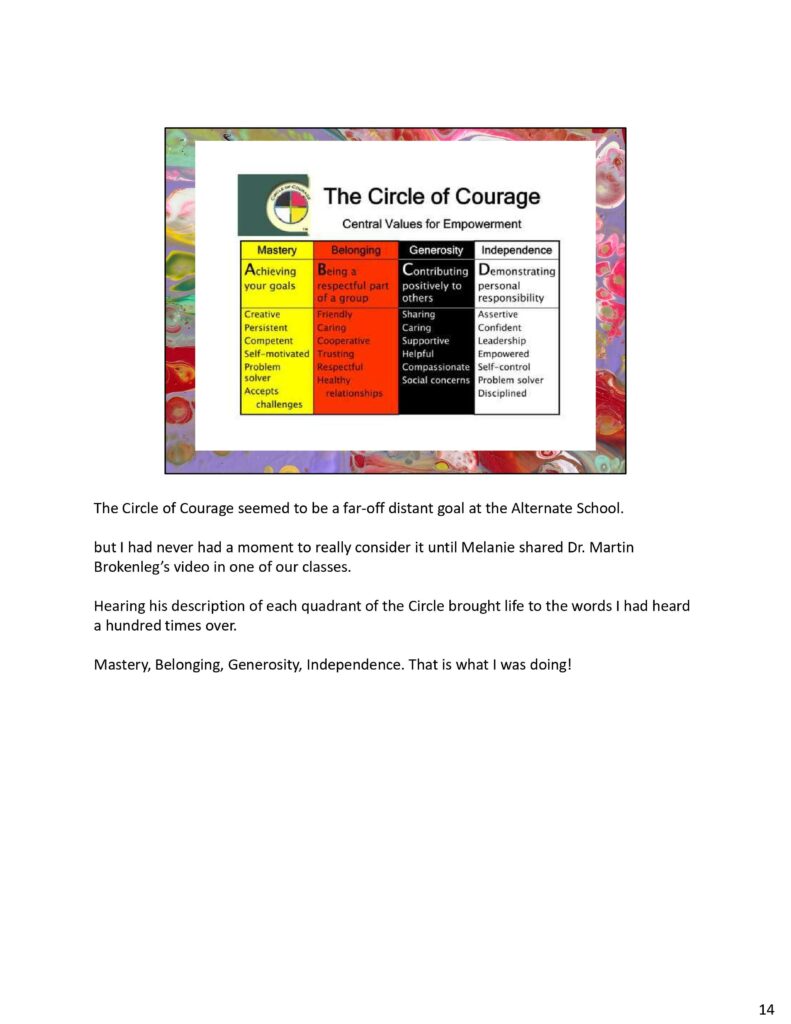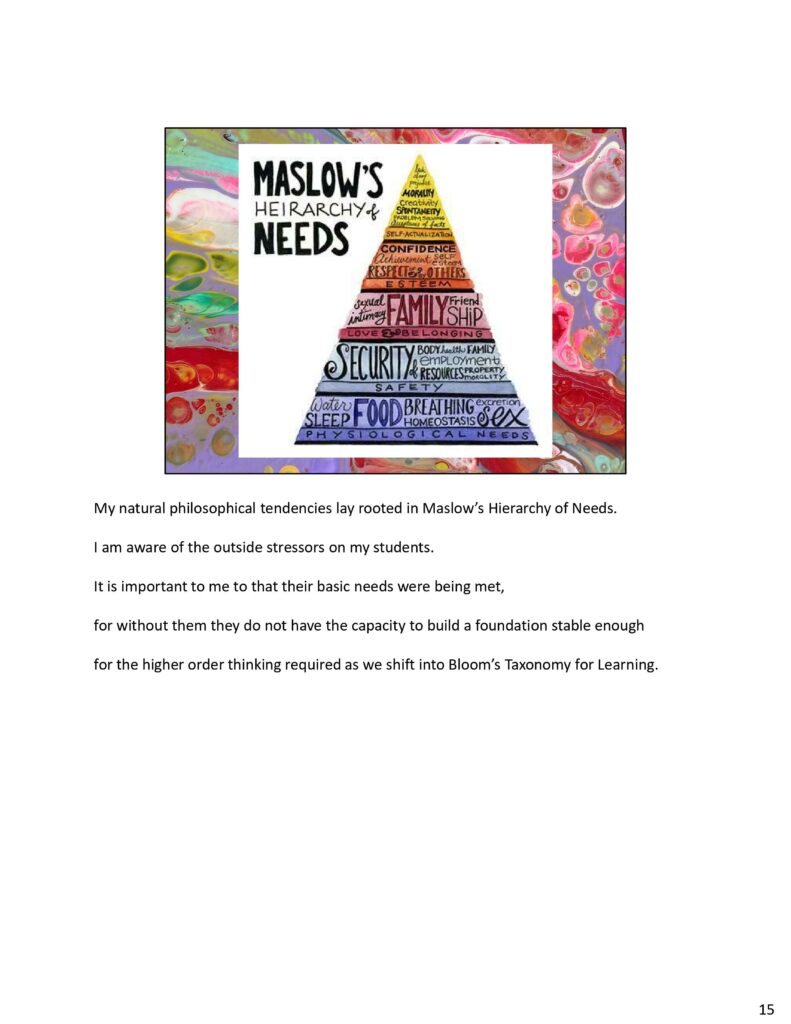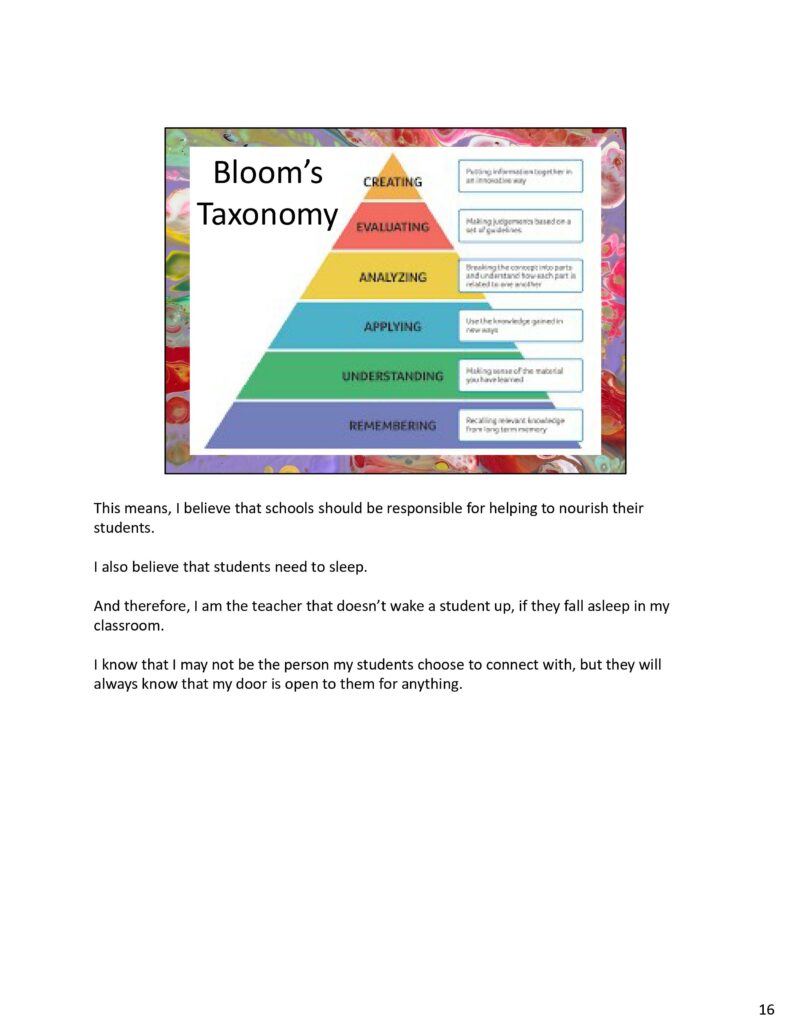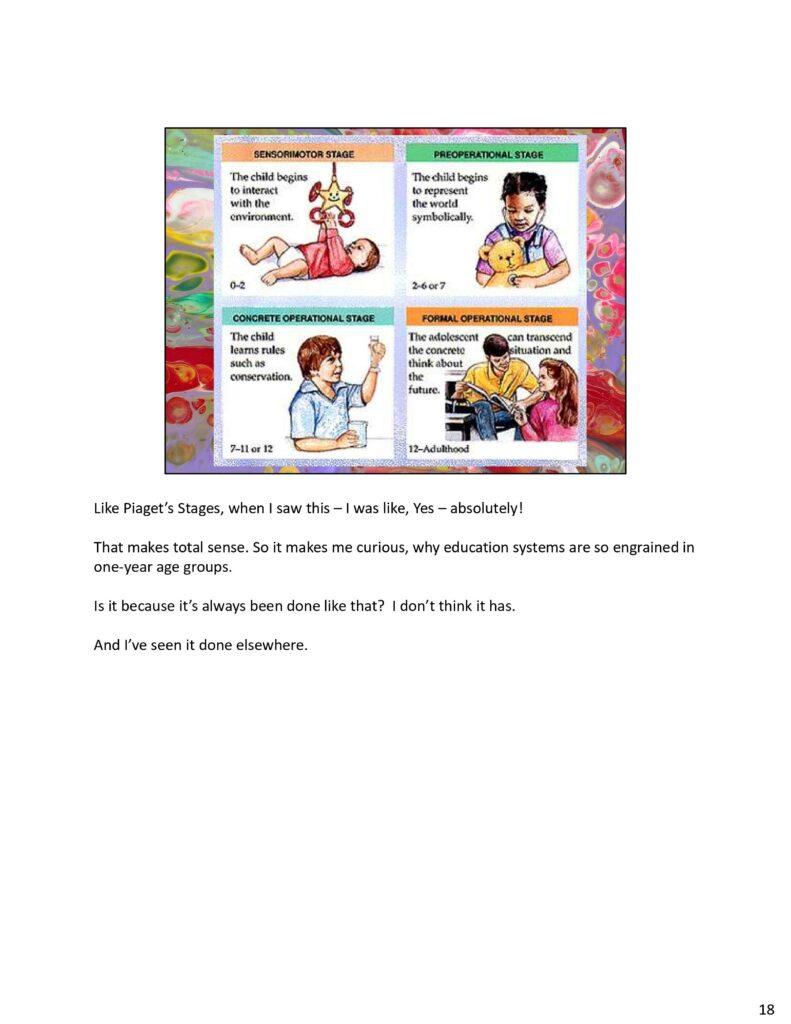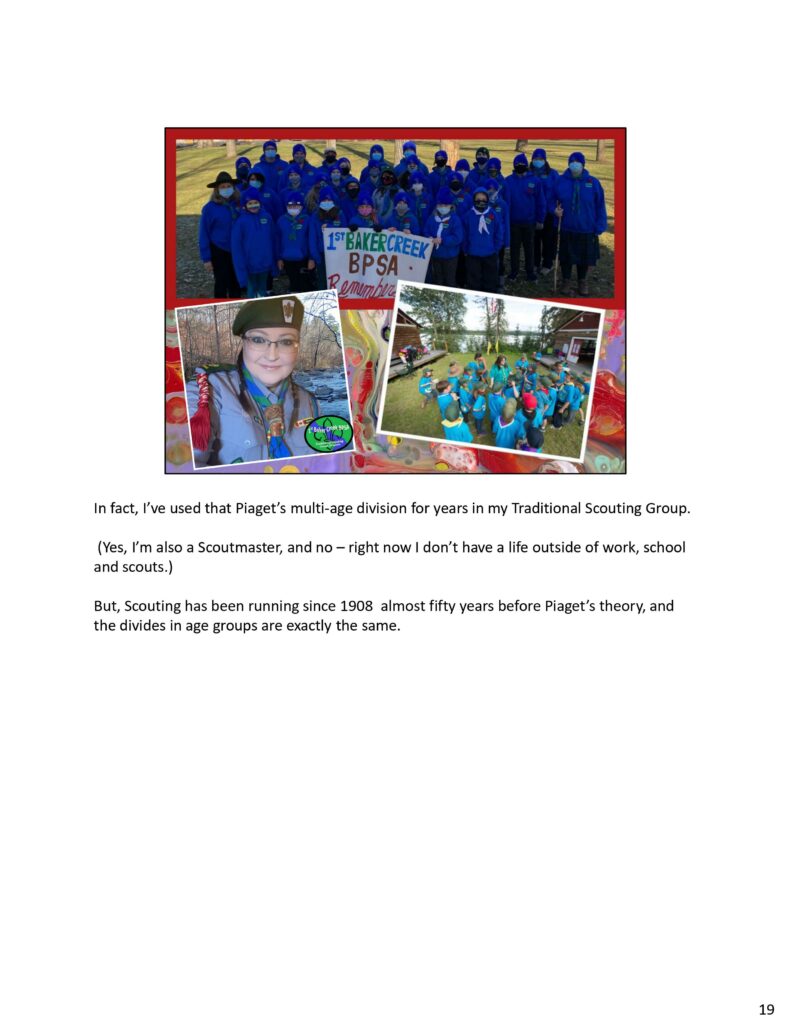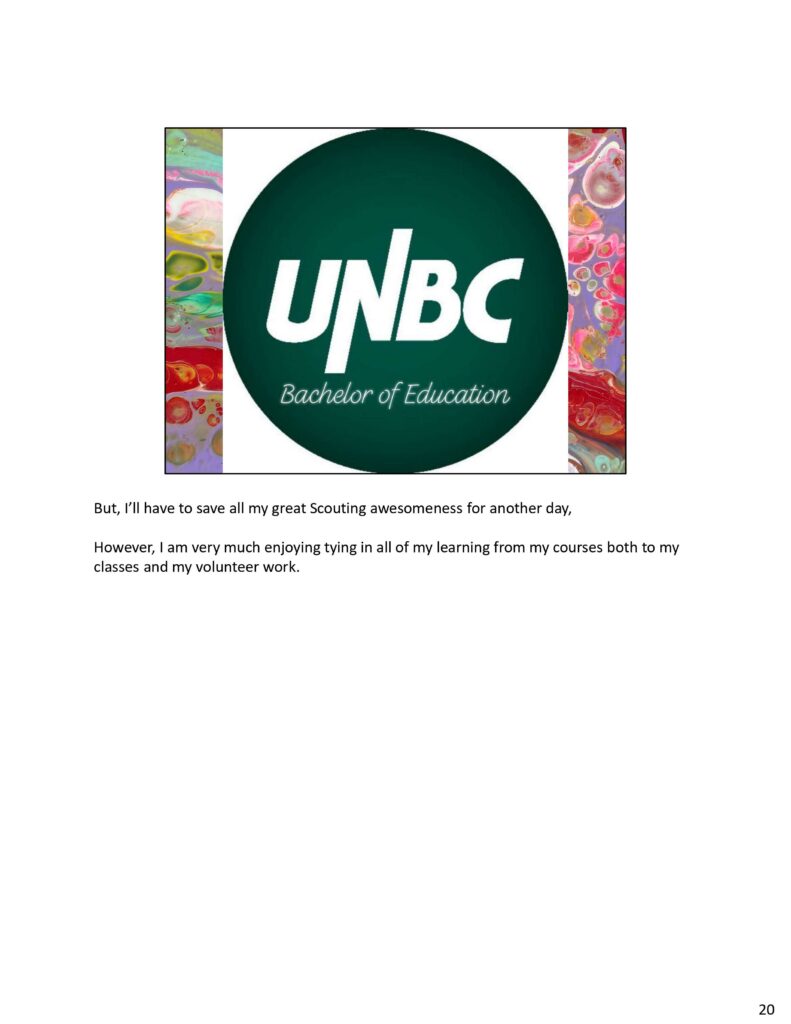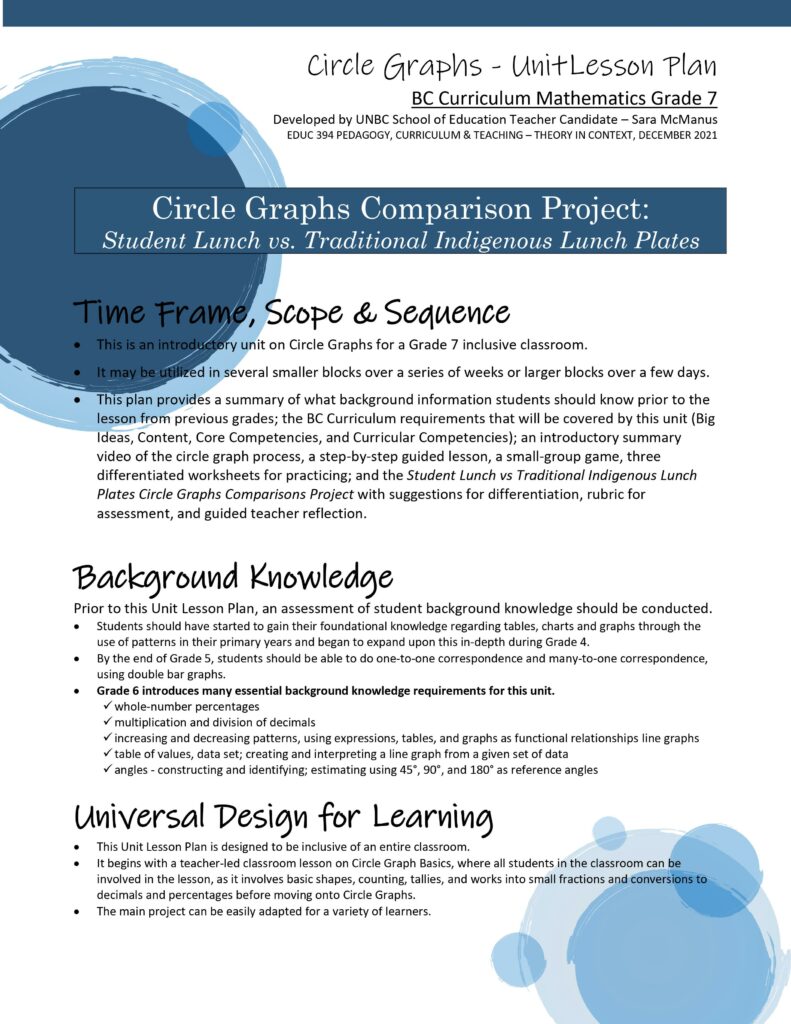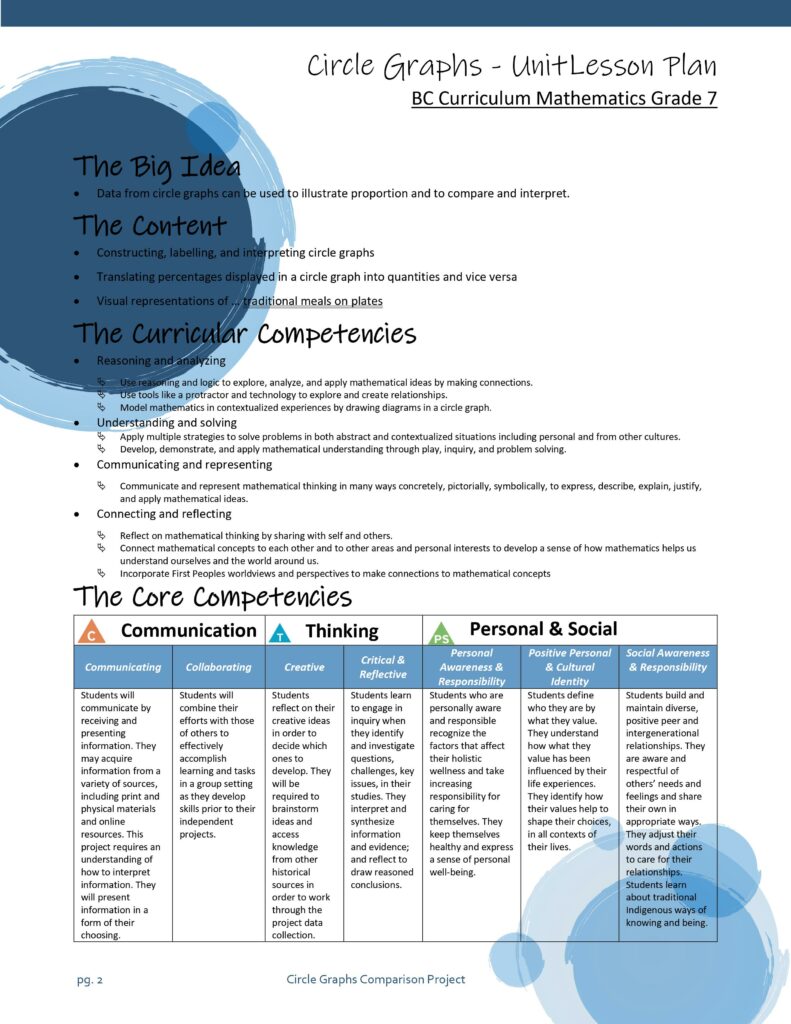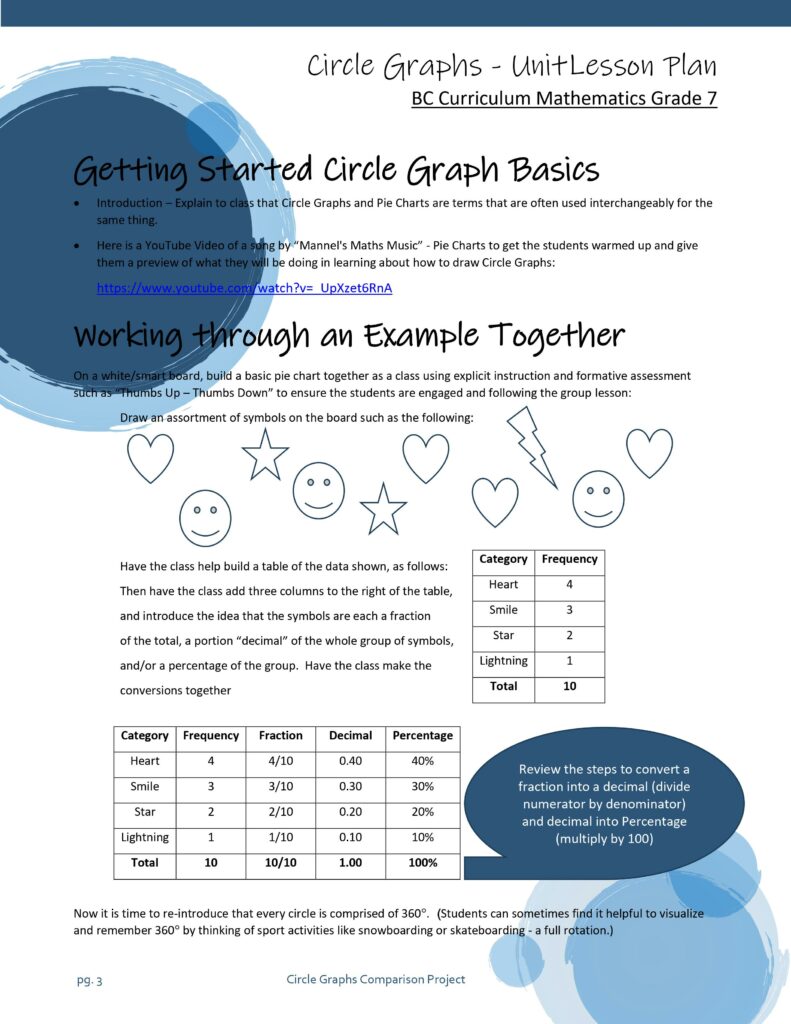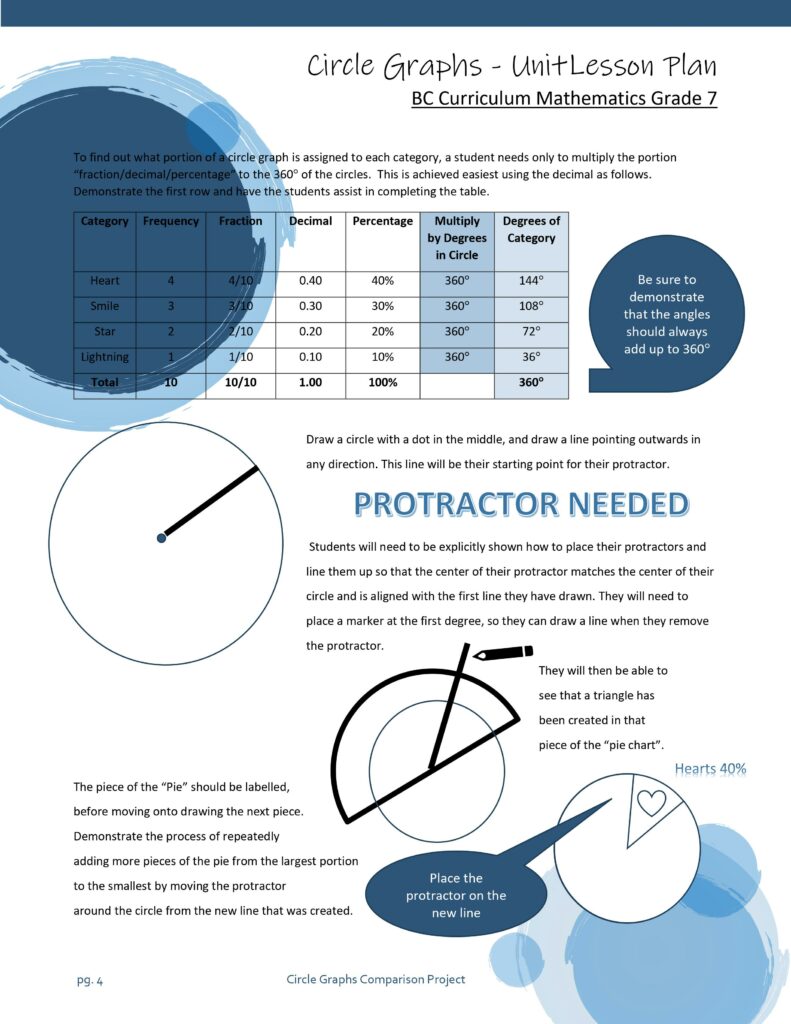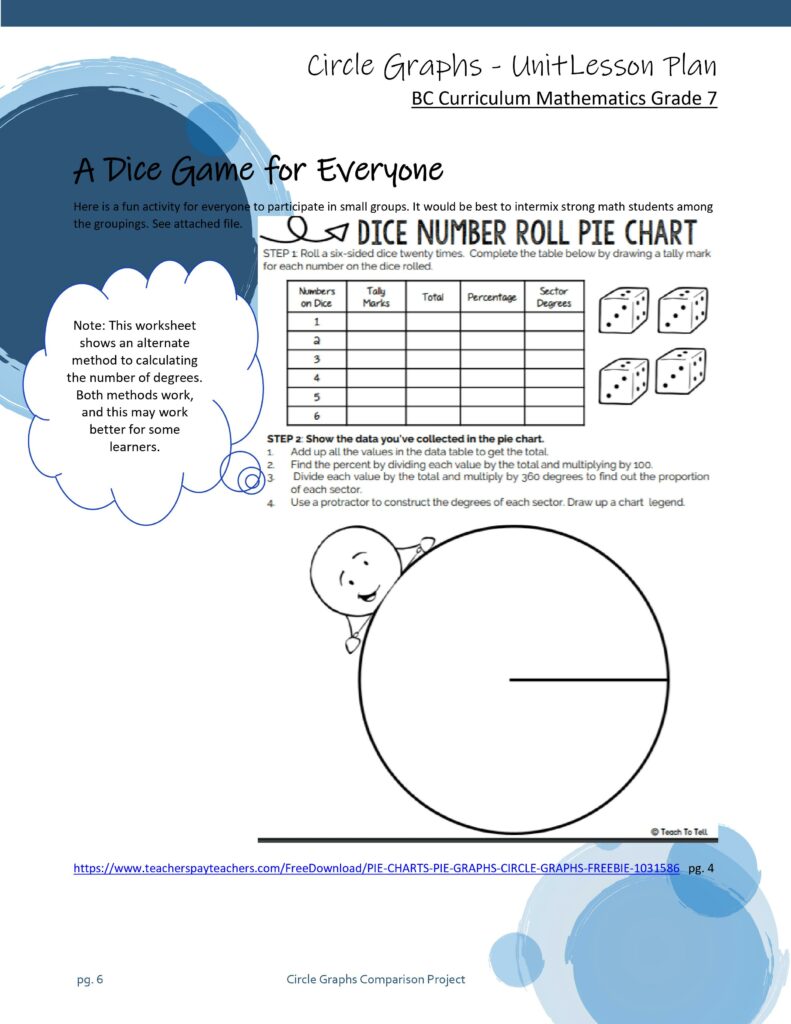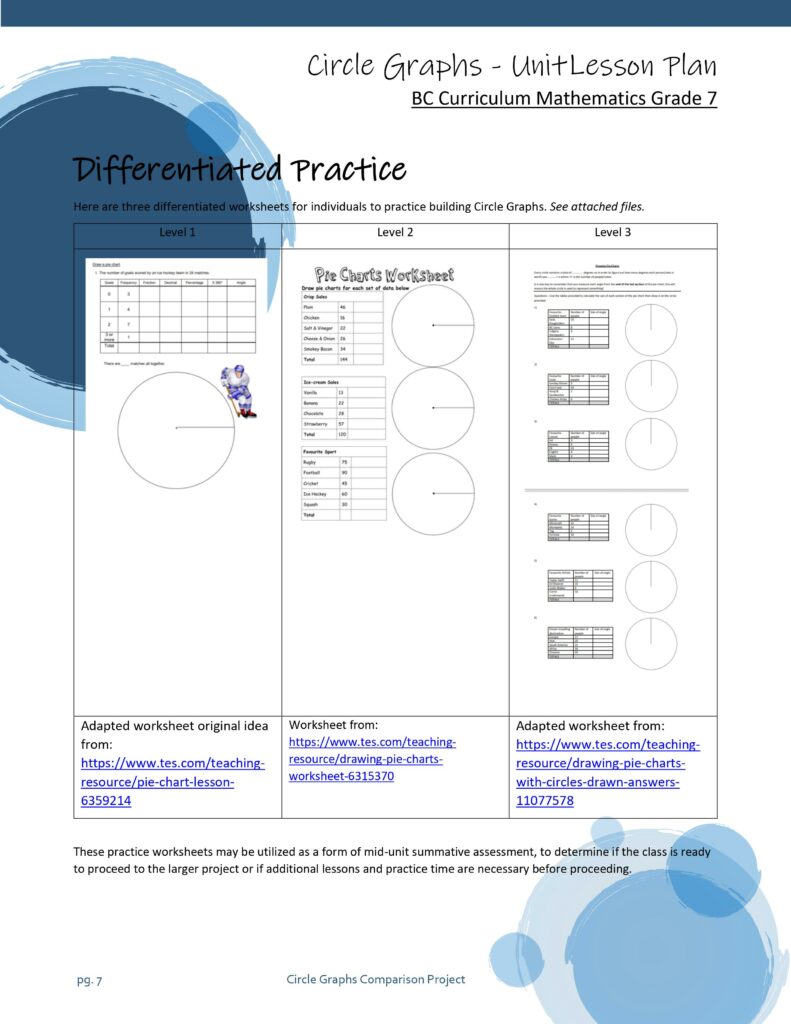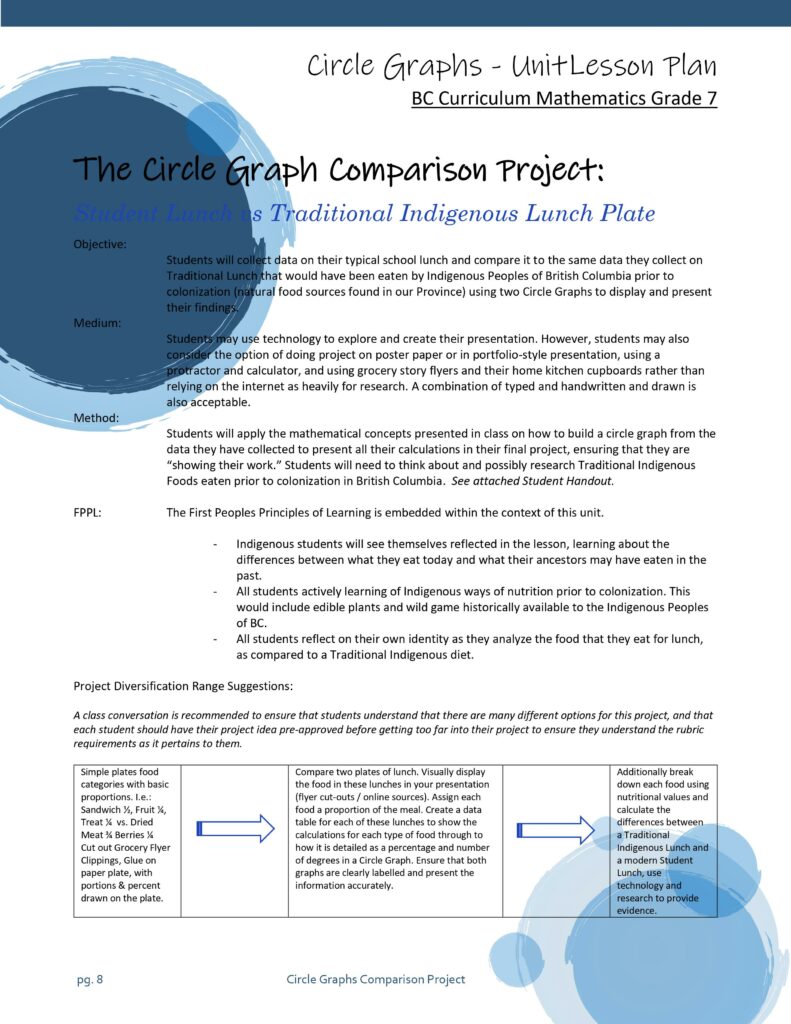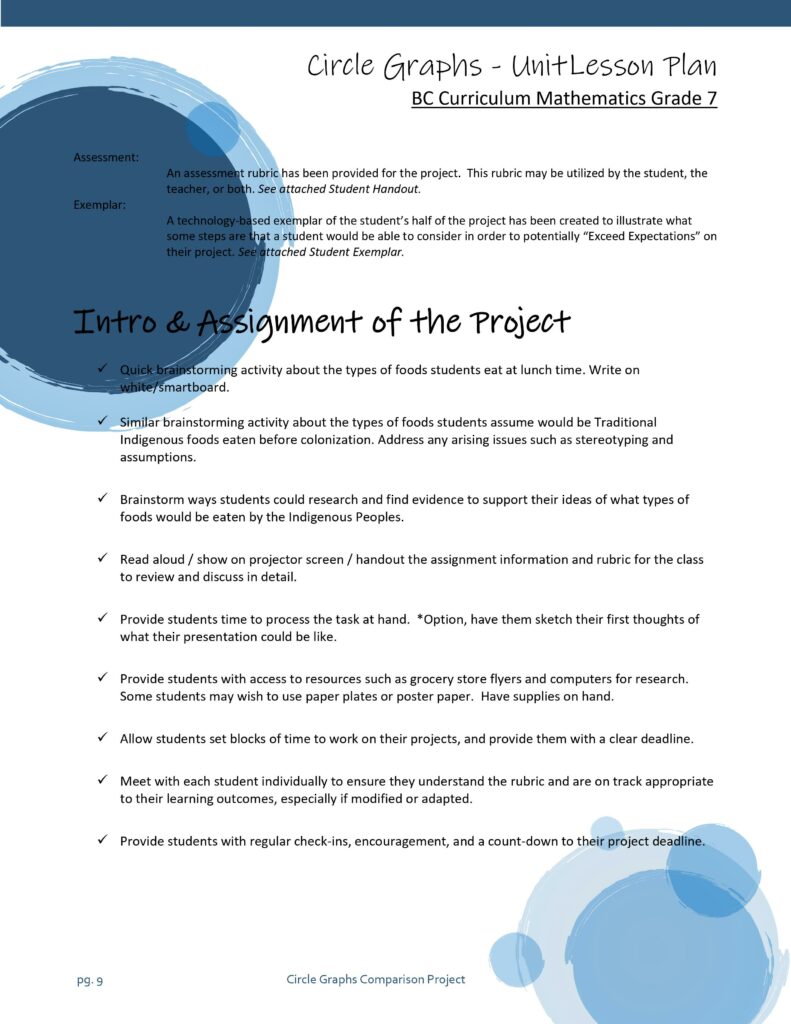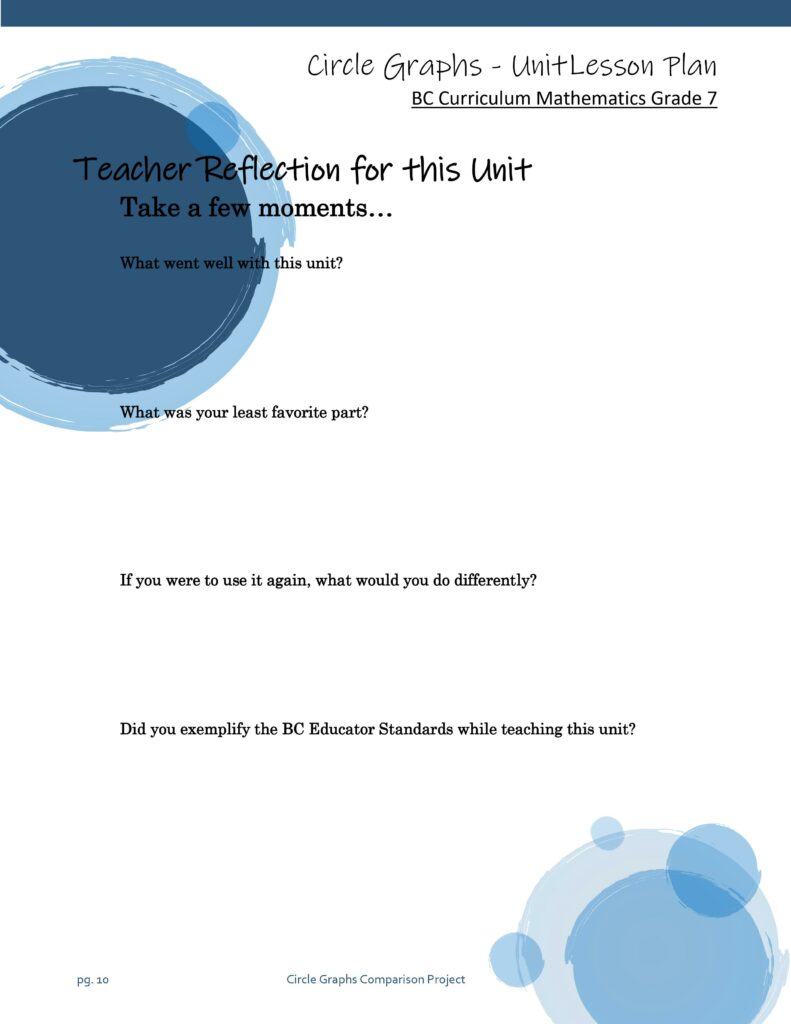Grade 7 – Circle Graphs Unit Plan
Unit Curriculum Guide
Unit Curriculum Guide EDUC 394 Sara Aurora Carly Amanda
EDUC 394
PEDAGOGY, CURRICULUM AND TEACHING – THEORY IN CONTEXT
October 28, 2021
Unit Plan Design: Carly Lorntsen, Sara McManus, Aurora Mernickle, Amanda Sumption
Land acknowledgement: With uttermost respect and gratitude, We would like to acknowledge that we work and learn on the traditional, ancestral and unceded territory of the Dakehl people (Lhatko Dene, Nazko, Lhoosk’uz Dene First Nations), and the Tsilhot’in people (?Esdilagh First Nation).
UNIT CURRICULUM GUIDE
LEVEL/GRADE:
Intermediate. Grade 6 & 7
Whole-Class, Combined Grades, Integrated Curriculum Unit.
AREA OF FOCUS:
First Peoples of Canada Indigenous Storytelling
OVERVIEW OF UNIT:
Integrating Indigenous storytelling into the classroom and curriculum has multiple benefits for all students. It can help build a sense of identity, enhance imagination and critical thinking, strengthen memory, reading and writing skills, and elevate oral communication. When students experience Indigenous storytelling in the curriculum, it heightens future generations’ worldviews.
THE BIG IDEAS:
The unit plan is based on the foundation of three big ideas from the grade
6 and 7 curriculums, as follows:
English Language Arts 6
● Exploring stories and other texts helps us understand ourselves and
make connections to others and the world.
Socials Studies 7
● Religious and cultural practices that emerged during this period have
endured and continued to influence people.
Art Education 6
● Dance, drama, music and visual arts are each unique languages for
creating and communications.
THE CORE COMPETENCIES:
Throughout the unit, all students will be developing the following core competencies:
Communication
● Acquiring and presenting information.
Creative Thinking
● Creating and innovating.
Critical Thinking
● Designing and developing.
Positive Personal and Cultural Identity
● Understanding relationships and cultural contexts.
THE CONTENT:
The students will be expected to demonstrate their learning on the
following content within this unit:
English Language Arts 6
● Story/text
○ Oral texts include speeches, poems, plays, and oral stories.
○ Literary elements: narrative structures, characterization, and
setting.
○ Literary devices: sensory detail (e.g., imagery, sound devices),
and figurative language. (e.g., metaphor, simile)
● Language features, structures, and conventions
○ Features of oral language include tone, volume, inflection,
pace, gestures.
○ Presentation techniques (in written, oral, or digital form)
should reflect an appropriate choice of medium for the
purpose and audience, and demonstrate thought and care in
organization.
Socials Studies 7
● Origins, core beliefs, narratives, practices and influences of religions
including at least one indigenous to Americas.
Arts Education 6
● Traditional and contemporary Aboriginal arts making process.
○ dances, songs, stories, and objects created by Aboriginal
peoples for use in daily life or to serve a purpose inspired by
ceremonies as part of cultural tradition.
● The purposeful application of elements and principles to create
meaning in the arts.
○ drama: character, time, place, plot, tension, mood, focus,
contrast.
THE CURRICULAR COMPETENCIES:
The unit plan is built upon the students being expected to be able to do the
following:
English Language Arts 6
● Apply appropriate strategies to comprehend written, oral, and visual
texts, guide inquiry and extend thinking.
● Think critically, creatively, and reflectively to explore ideas within,
between, and beyond texts.
● Recognize and identify the role of personal, social, and cultural
contexts, values, and perspectives in texts.
● Respond to text in personal, creative, and critical ways.
● Understand how literary elements, techniques, and devices enhance
and shape meaning.
● Recognize and appreciate the role of story, narrative, and oral
tradition in expressing First Peoples perspectives, values, beliefs,
and points of view.
● Use and experiment with oral storytelling processes.
● Select and use appropriate features, forms, and genres according to
audience, purpose, and message.
Socials Studies 7
● Identify what the creators of accounts, narratives, maps, or texts
have determined is significant.
● Assess the credibility of multiple sources and the adequacy of evidence used to justify conclusions.
Arts Education 6
● Express feelings, ideas, and experiences through the arts.
● Experience, document and present creative works in a variety of
ways.
● Take creative risks to express feelings, ideas, and experiences.
● Explore relationships between identity, place, culture, society, and
belonging through the arts.
● Demonstrate an understanding and appreciation of personal, social,
cultural, historical, and environmental contexts in relation to the arts.
SEQUENCE, DIFFERENTIATION AND ASSESSMENT:
The following is a recommended chronological sequence of suggested activity frameworks, differentiation strategies, and assessment styles for the unit:
STEP 1:
● The teacher will activate and/or build base knowledge of First Peoples of Canada’s Indigenous Storytelling.
○ Example: Group Readings of Metis, Inuit, and /or First Nation legends and stories from different time periods.
○ Differentiation for Learners
■ A suggestion for a learner who is struggling with group readings may find it helpful to listen to audiobooks or have a support worker read legends/stories in an alternate setting.
○ Assessment Style: Formative
■ Examples: Lesson exit tickets, in-class quick writes, drawing of concept maps.
STEP 2:
● The students will research First Peoples of Canada’s Indigenous stories and legends using the available library and online resources.
○ Differentiation for Learners
■ A suggestion for a learner who may struggle with independent research may be a prepared selection of stories for the student to select their favourite.
○ Assessment Style: Formative
■ Suggestions – Have the students keep a log of the websites and books they use for research. Students could give themselves a daily mark out of 3 or a sad/neutral/happy face for the effective use of their research time each day.
STEP 3:
● Students will select one Indigenous story or legend from the First Peoples of Canada that they are interested in and provide summary of it to illustrate their comprehension.
○ Example: Multiple paragraph essay.
○ Differentiation for Learners
■ This could be done in a group brainstorming activity for similar learners or verbal sharing activity.
○ Assessment Style: Summative
■ Example: Teacher-created and assessed rubric based on English Language Arts Curricular Competencies.
STEP 4:
● Students will analyze their chosen story/legend and provide evidence of their deeper cultural understanding of the significance surrounding their story/legend in regards to such issues as the story’s hidden lesson/values and its significance to regional uniqueness, etc.
○ Example: PowerPoint/Google Slides document
○ Differentiation for Learners
■ A suggestion for a student who may struggle with technology would be to brainstorm this evidence with a support worker/teacher to capture their understanding.
○ Assessment Style: Summative
■ Example: Teacher-created rubric based on Social Studies Curricular Competencies and Student Self-Assessment.
STEP 5:
● Create a new legend (tell their own story) in whatever format they choose and share this with the class through an arts lens.
○ Examples: Poster, poetry, oral story, skit, children’s book, model.
○ Differentiation for Learners
■ The open-ended nature of Step 5 allows for great learner flexibility and customization.
○ Assessment Style: Authentic
■ Examples: Teacher-created and assessed rubric based on the Arts Education Curricular Competencies.
References – BC’s Curriculum:
https://curriculum.gov.bc.ca/curriculum/english-language-arts/6/core
https://curriculum.gov.bc.ca/curriculum/arts-education/6/core
https://curriculum.gov.bc.ca/curriculum/social-studies/7/core
“This was absolutely terrific. You have done a nice job of
interweaving the FPPL as well as storytelling into a unit of study. I
also liked the progression of skills and concepts as well as various
forms of assessment.
I think any school principal would be delighted to see such detailed
and thoughtful work. Well done!
GRADE = A+” Dr. David Litz

